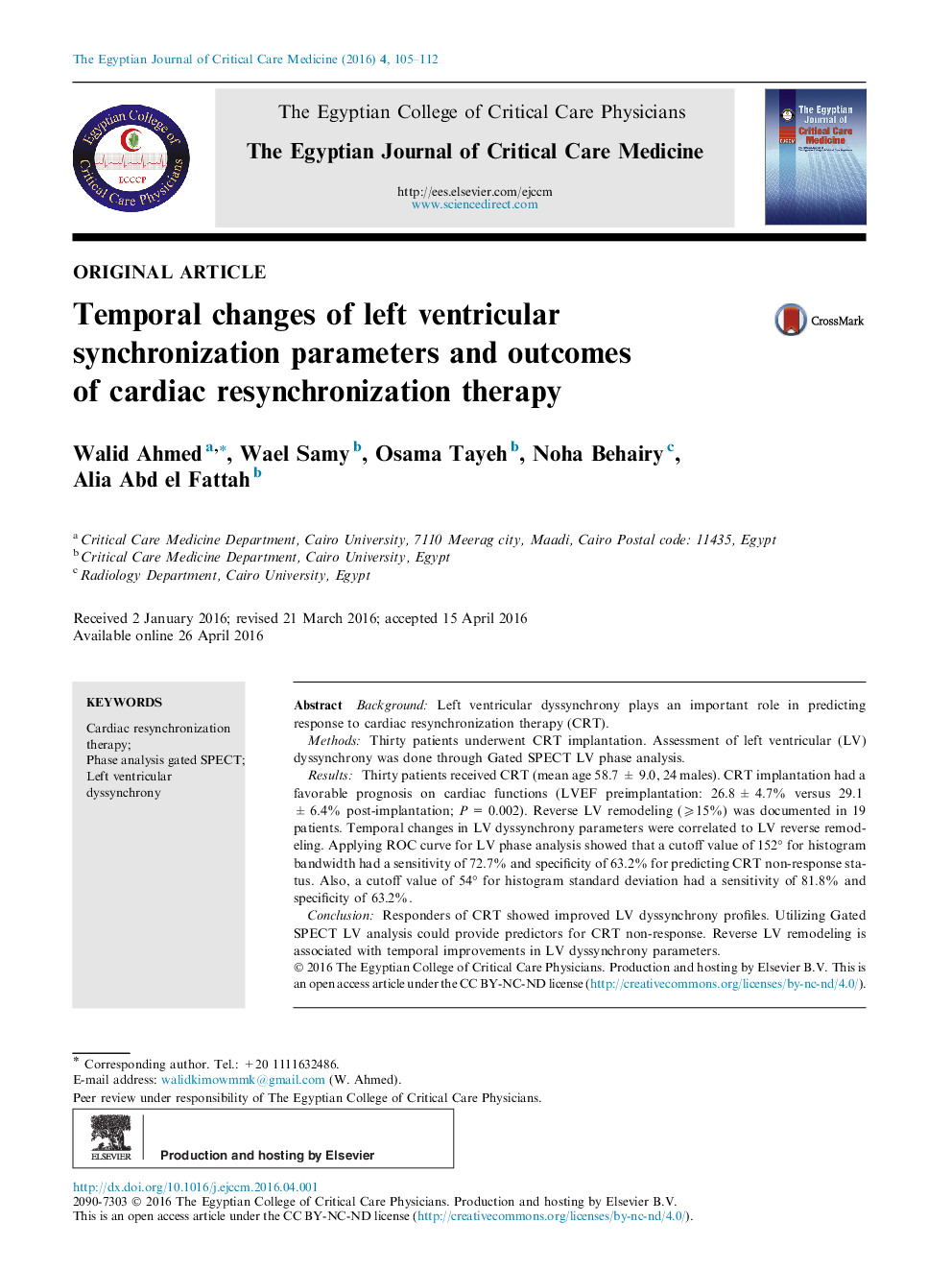| Article ID | Journal | Published Year | Pages | File Type |
|---|---|---|---|---|
| 2910856 | The Egyptian Journal of Critical Care Medicine | 2016 | 8 Pages |
BackgroundLeft ventricular dyssynchrony plays an important role in predicting response to cardiac resynchronization therapy (CRT).MethodsThirty patients underwent CRT implantation. Assessment of left ventricular (LV) dyssynchrony was done through Gated SPECT LV phase analysis.ResultsThirty patients received CRT (mean age 58.7 ± 9.0, 24 males). CRT implantation had a favorable prognosis on cardiac functions (LVEF preimplantation: 26.8 ± 4.7% versus 29.1 ± 6.4% post-implantation; P = 0.002). Reverse LV remodeling (⩾15%) was documented in 19 patients. Temporal changes in LV dyssynchrony parameters were correlated to LV reverse remodeling. Applying ROC curve for LV phase analysis showed that a cutoff value of 152° for histogram bandwidth had a sensitivity of 72.7% and specificity of 63.2% for predicting CRT non-response status. Also, a cutoff value of 54° for histogram standard deviation had a sensitivity of 81.8% and specificity of 63.2%.ConclusionResponders of CRT showed improved LV dyssynchrony profiles. Utilizing Gated SPECT LV analysis could provide predictors for CRT non-response. Reverse LV remodeling is associated with temporal improvements in LV dyssynchrony parameters.
